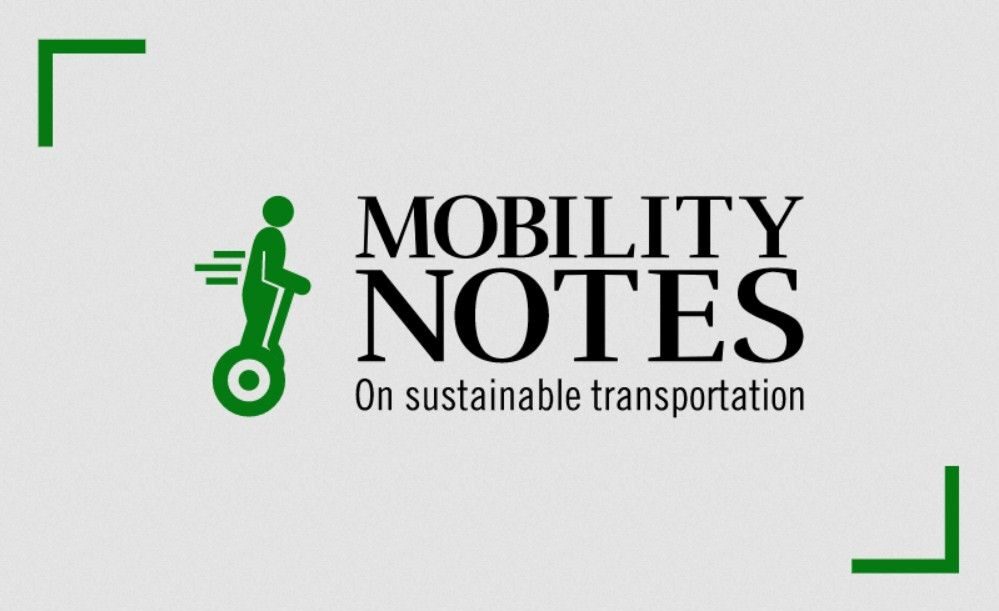Regulations
CARB announces deal with heavy-duty OEMs on low NOx and electrification
California Air Resources Board announced an agreement with truck and engine manufacturers which provides much needed regulatory certainty and harmonization across the country. Here are some highlights of the agreement.
Background
We have covered California’s Low NOx Omnibus regulation here, which requires heavy-duty trucks to reduce tailpipe NOx emissions by 75% starting model year (MY) 2024 and 90% starting MY 2027.
This was followed by the U.S. EPA’s nationwide version, which also targets NOx reduction, but with slightly reduced stringency (35 mg/bhp-hr limit vs CARB’s 20 mg/bhp-hr for < 435,000 miles). There were other important differences such as the in-use emission analysis methodology, limits over the low load cycle (LLC), limits at low temperatures, and others.
California also approved two regulations to promote ZEV trucks : the Advanced Clean Trucks and the Advanced Clean Fleets rules.
These are significant challenges to the industry, requiring adoption of both advanced ICEs and electric / fuel cell trucks. Having two sets of standards across the country doesn’t help. For CARB, it is also useful to not have the industry challenge its legal authority to set separate standards, and more importantly to embrace the decarbonization goals.
To address the above potential conflicts, CARB and the Truck and Engine Manufacturers association (EMA) reached an agreement on July 6th, 2023. Details are yet to be ironed out, but it is a good first step.
What's in the agreement?
OEMs will comply with CARB regulations
- OEMs will fully comply with CARB Omnibus low NOx regulation and in turn will commit to meeting the Advanced Clean Trucks (ACT) and the Advanced Clean Fleets (ACF) rules.
- OEMs / EMA will refrain from litigation in the event that CARB’s authority is challenged in court.
Extension to Section 177 States
The agreement will extend to other section 177 states which follow California. There are provisions to pool electrification credits across these states.
H2-powered internal combustion engines on the table
In 2023, CARB will host workshops to discuss the potential role of H2 ICE towards meeting the ZEV requirements
CARB has so far been resistant to H2-ICE so this is a slight softening of its position, and perhaps a willingness to accomodate OEMs who are ready with H2 ICE offerings
Alignment with EPA Low NOx rule
Specifically for low NOx, here are the proposed changes:
-
- HD-FTP test cycle: NOx limit is increased from current 20 mg/bhp-hr on FTP to 35 mg/bhp-hr, aligning with the US EPA.
-
- Low Load Cycle (LLC): NOx limit remains at 50 mg/bhp-hr. CARB has a relaxation at higher mileages > 600K mi and it needs to be clarified whether that relaxation goes away to be in line with the more stringent EPA rule.
Table showing revised limits, from the CARB document –
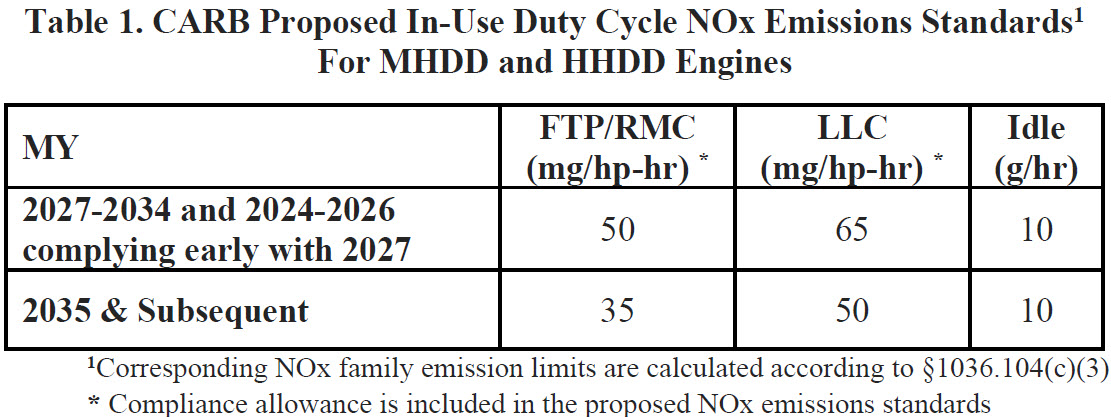
-
- Compliance margin : A margin of 15 mg/bhp-hr provided for in-use measurements for all limits (so for example, FTP limit increases from 35 to 50 mg/bhp-hr in use). The compliance is removed starting MY2035.
-
- Clean Idle Label: This is maintained, but will align with EPA’s 10 g/hr standard
-
- In-use emission analysis: CARB will adopt the 2-Bin Moving Average Window (2B-MAW) method as in the EPA rule (this is a change from CARB 3-Bin method in the Omnibus rule)
-
- Low Temperature emissions: NOx limit is raised at temperatures below 20 deg C., in line with the EPA. NOx limit increases by a factor of 1.6 going from 20 deg to 5 deg for MY 2027 – 2030. Beyond 2030, the boundary condition is extended down to 0 deg C and also the NOx limit is further tightened
Figure showing revised low temperature limits, from the CARB document –
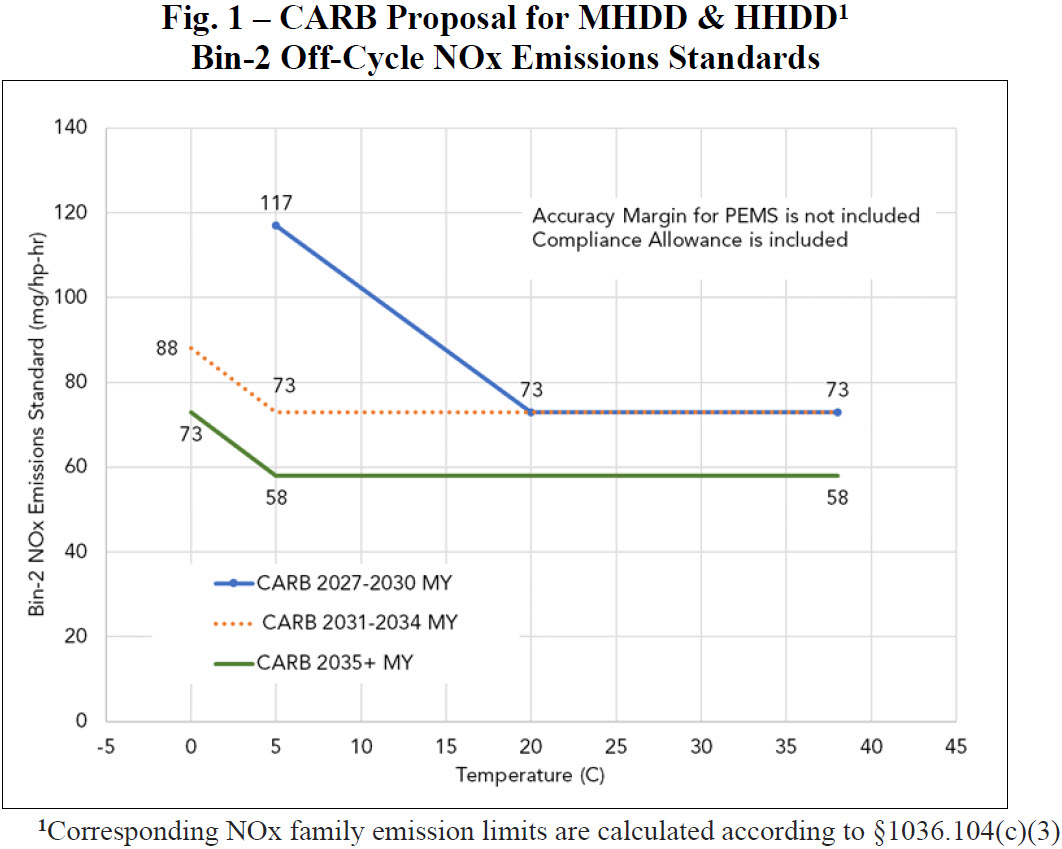
-
- Certification: CARB will maintain its certification program and independently evaluate issuing Executive Orders. It will maintain and require compliance with CARB OBD requirements.
- NOx credits: CARB agrees to the use of NOx credits in the ABT program across all 50 states
Sign up here to receive such summaries and a monthly newsletter highlighting the latest developments in transport decarbonization
5-Min Monthly
Sign-up to receive newsletter via email
Thank you!
You have successfully joined our subscriber list.
Recent Posts
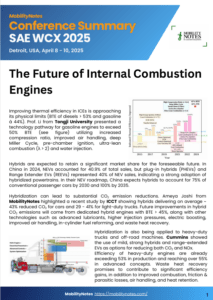
Conference Summary – SAE WCX 2025
![]()
A summary of the “SAE WCX 2025” conference held in Detroit.
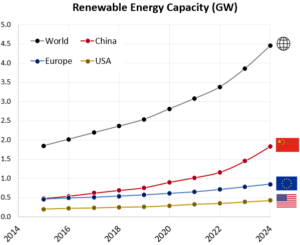
IRENA Renewable Energy Capacity Statistics 2025
![]()
According to the latest report from IRENA, 2024 saw the largest increase in renewable capacity, accounting for 92.5% of overall power additions.
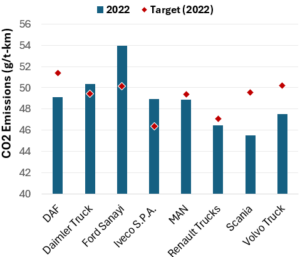
CO2 Emissions Performance of Heavy-Duty Vehicles in Europe – 2022 Results
![]()
The European Commission has published the official 2022 CO2 emission results for heavy-duty vehicles. Many OEMs are ahead of the targets and have gained credits, while others have their work cut out as we approach the 2025 target.

